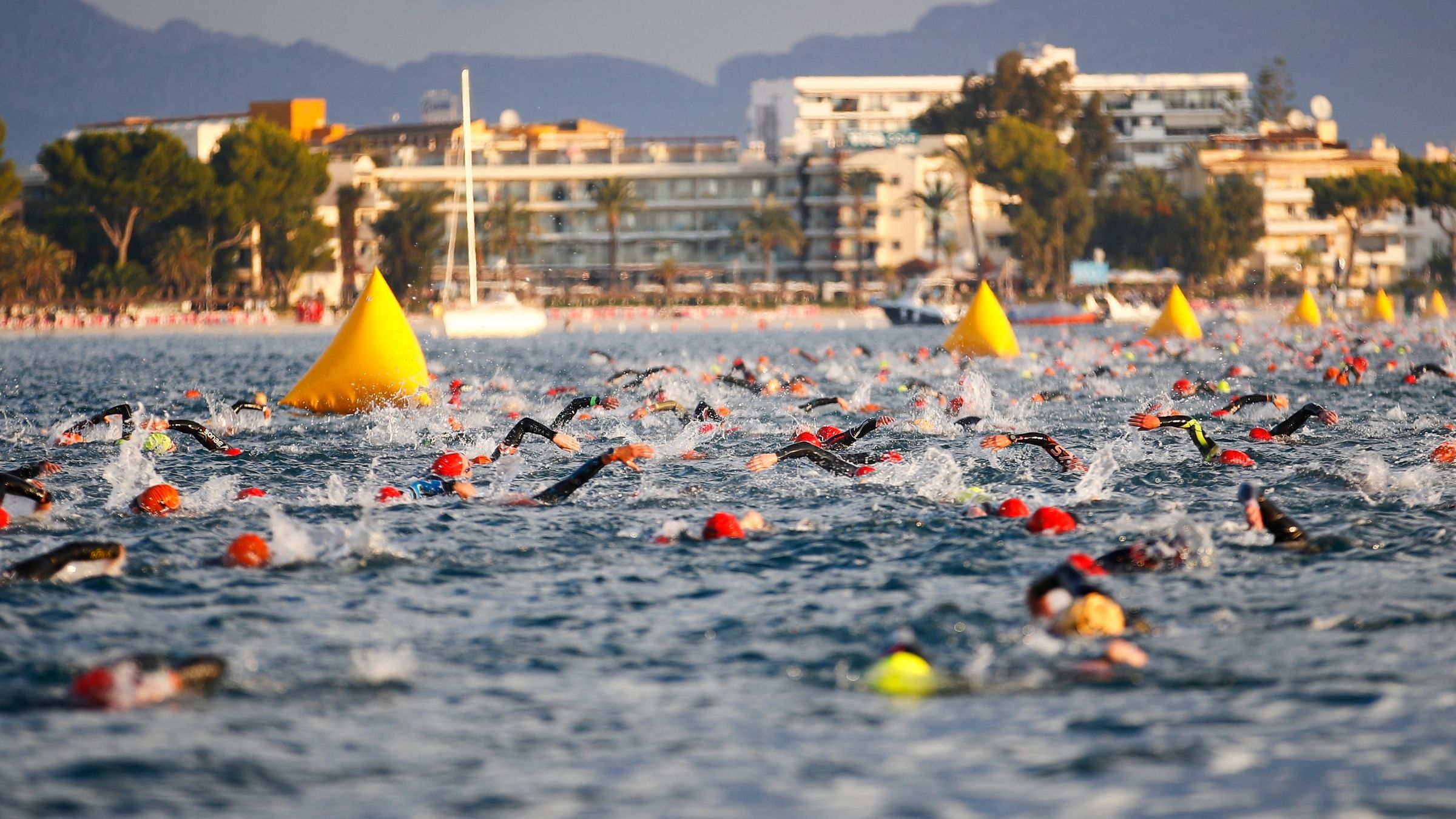An Olympian's Advice for Dealing with Jellyfish, Aggro Swimmers, and More

(Photo: Eric Alonso/Getty Images)
Sarah Haskins, a 2008 Beijing Olympian and 2011 Pan American Games Gold medalist, has encountered it all during open-water swims. Read on for her advice for some of the most common swimming scenarios that can throw triathletes off track.
What should I do if I have trouble staying on course in open water?
Swimming in open water is very different from the pool, as waves and currents are possible and you don’t have lane lines and black lines to help you swim straight. But there are techniques to help you stay on course. Every four to five strokes, I pick my head up out of the water to see where I am going. I always sight just before I take a breath, so the movement is more fluid. When I sight, I look for the swim buoys. But sometimes with large waves or choppy water, the buoys are difficult to see. To solve this problem, I will often look for large land markers over the buoys to help me sight the course. Sometimes the sun glare can be brutal, so make sure to wear tinted goggles. If you are behind someone, you can also follow the bubbles of their feet, which makes it very easy to sight. But make sure the person you are following is swimming in the right direction. Never blindly follow another swimmer!
RELATED: A Complete Guide to Triathlon Swimming
How do I deal with a strong current during my triathlon swim?
It is always a good idea to scope out the swim course prior to the race. If you realize there’s a strong current, find out which direction the current is pulling. If the current is pulling strong to the left, it is a good idea to start on the right side of the starting line and sight for the right side of the buoy. As you swim, you will be pulled to the left, but by starting to the farthest right possible, you will be fighting the current less and swimming less, which equals easier and faster swimming.
What do I do if there are jellyfish or stingrays during my open-water swim?
Most jellyfish are not too dangerous. Swimming in Australia I have experienced little electric stings, which I don’t even notice with the adrenaline of racing.! If you do happen to have a problem during the swim course, lifeguards are always there to help, so stay calm and swim over to a guard or volunteer kayak if you’re bit and you don’t think you will be able to finish the swim. That being said, I truly feel that race directors put on races in safe conditions and would not have swimmers race in anything that could negatively affect athletes’ health.
How should I adjust if someone kicks me in the face and I get a bloody nose?
Most of the time, swimmers will get bumped around by accident. If you do get a strong kick to the nose, try to stay calm and keep swimming. It may help to stop for a few seconds, adjust the goggles and move away from the swimmer with the tremendously strong kick. Also, be sure that when you’re swimming behind someone, swim a few inches behind their kick. If your hands are constantly touching the feet in front of you, you are slowing yourself and the person in front of you.
What about if I’m being pummeled by other competitors?
If you have great sprinting speed, it may help to start out fast and get away from other swimmers. If swimming is not your strength, it may be better to start off easy and let the stronger swimmers start just a few seconds before you so you can swim at your pace without the chaos at the start. If you do get into a situation where you have a couple swimmers on you, stay calm. As tough as it is not to react and get angry, stay within yourself and let the rough swimmers go on and move over to another spot. Getting angry will waste too much precious energy at the beginning of the race. Remember that most swimmers want their space just as much as you, so stay calm, swim smart and have fun!
RELATED: Recover After a Rough Swim Start
This article originally appeared in the November 2010 issue of Triathlete magazine.